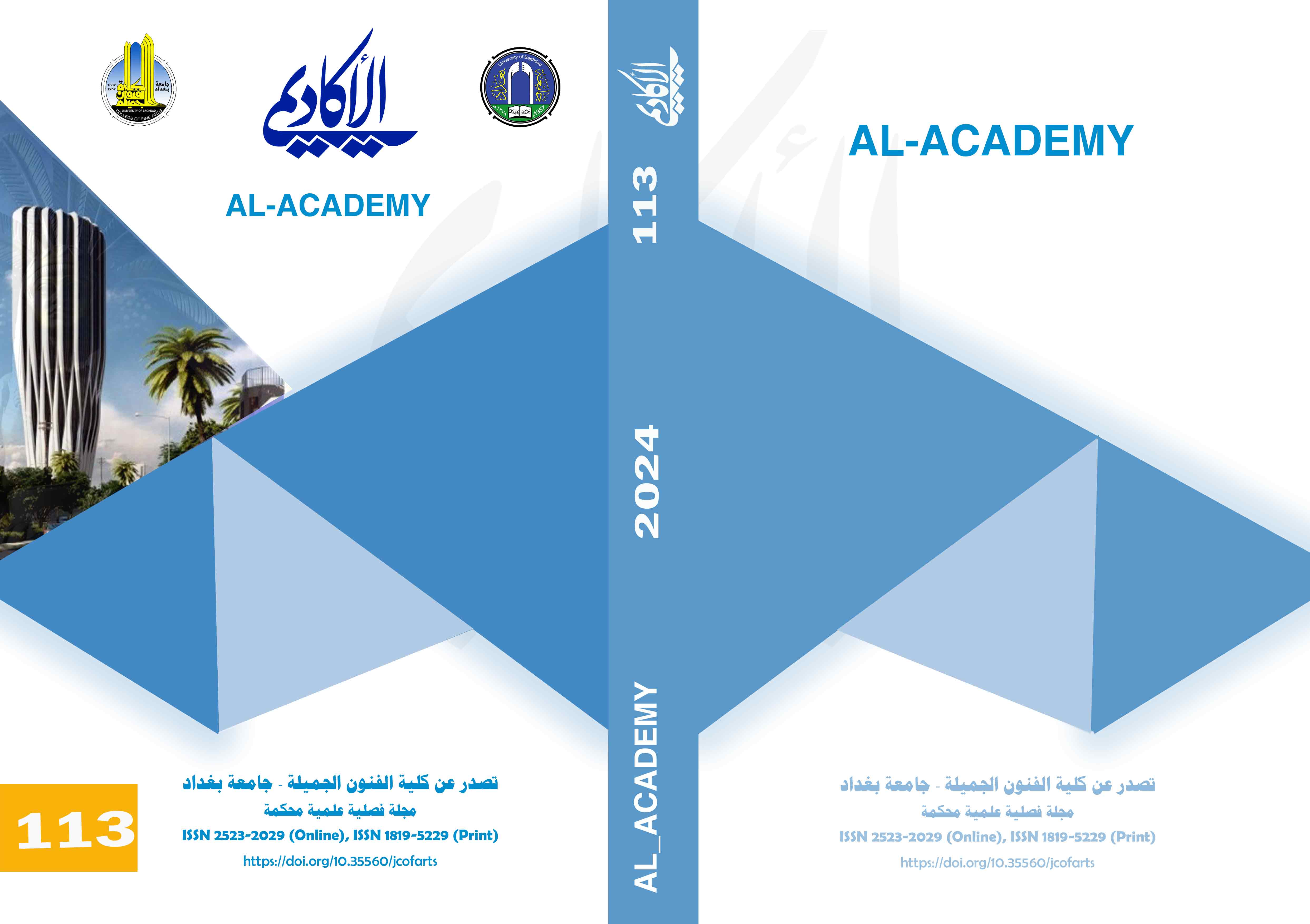Modern Technologies and Their Effectiveness in Designing the Interior Space of Fashion Show Houses
DOI:
https://doi.org/10.35560/jcofarts1478Keywords:
Interior space technologies, holograms, cyberspace, light and laser technology, interior design, fashion show spacesAbstract
Modern technologies have become a distinct role in the formal structure of the interior space, as they possess several possibilities in building a common aesthetic, perceptual, and semantic structure that enriches the visual image as much as the interpretive capabilities of the recipient. Fashion show spaces are among the interior spaces that require privacy and enrichment of their visual and expressive image within the space. Therefore, it was Dividing the research into four chapters, the first chapter contained the research problem that emerged with the following question: "What are the modern technologies that can be used in interior spaces and are effective in designing fashion show halls?", and the two objectives of the research: "Investing modern technologies and applying them in contemporary interior design." ," "Revealing the reality of the design of the showroom in a local fashion house." The second chapter included the theoretical framework in two sections. The first section dealt with: "Modern technologies and their uses in interior design." The second section dealt with "Designing the interior spaces of fashion houses," and was appended The theoretical framework indicators, and the third chapter came by relying on the descriptive approach in analyzing the samples, as they were analyzed according to the analysis axes form designed according to the literature on the topic and the theoretical framework indicators, and the fourth chapter came with the results and conclusions related to the research topic, and the practical aspect included preparing a design proposal for the local model. The research ends with a list of sources and references
References
Amna Bassem Muhammad Saleh, (2020), “Subjective Tendency in the Intellectual Orientations of Architecture and Fashion” published research, Journal of Engineering and Sustainable Development, Volume 24, Issue 4, Iraq.
Ahmed Talib Jassas, (2015), “Technical Kinetic Diversity in the Design of Interior Spaces” unpublished master’s thesis, Department of Interior Design, College of Fine Arts, University of Baghdad, Iraq.
Intisar Rasmi Musa, (2017), “Scientific Papers and Future Visions in Graphic Design” Dar Al-Fath for Printing and Publishing, 1st edition, Baghdad, Iraq.
Al-Asadi, Faten Abbas Lafta, (2020), “Artificial Intelligence and Digitalism in Interior Design”, Dar Al-Fath for Printing and Publishing, 1st edition, Iraq.
Al-Samarrai, Sinan Adnan, (2001), “Architecture and Infomedia”, unpublished doctoral thesis, Department of Architecture, College of Engineering, University of Baghdad, Iraq.
Al-Saidi, Ola Muhammad Abdel Karim, (2010), “The effect of applying virtual reality on perceiving the characteristics of architectural space” unpublished master’s thesis, Architectural Sciences, University of Technology, Baghdad, Iraq.
Al-Shabandar, Munawra Sabah Hassan, (2004), “The Impact of Technology on Contemporary Iraqi Architecture” unpublished master’s thesis, Department of Architecture, University of Technology, Baghdad, Iraq.
Al-Ani, Hind Muhammad Sahab, (2002), “Aesthetic values in the designs of children’s fabrics and fashions and their dialectical relationship” unpublished doctoral thesis, College of Fine Arts, University of Baghdad, Iraq.
Al-Taha, Ahmed Majed Abdel Halim, (2002), “The Effect of Context in Achieving Communication”, unpublished doctoral thesis, Department of Architecture, University of Technology, Baghdad, Iraq.
Al-Kalloub, Bashir Abdel-Rahim, (B.T.), “Technology in the Teaching and Learning Process” Dar Al-Shorouk, 2nd edition, Amman.
Al-Mousawi, Wissam Saleh Hamad, (2014), “Functional fulfillment in the structure of the interior spaces of health centers” unpublished master’s thesis, College of Fine Arts, Interior Design, University of Baghdad, Iraq.
Harith Asaad Abdel Razzaq, (2005), “Design Treatments for Internal Determinants in Interior Space” unpublished master’s thesis, Interior Design, College of Fine Arts, University of Baghdad.
Haneen Suleiman Abd, (2013), “3D Holographic Imaging” Modern Physics Journal, Scientific Articles, Educational Physics Forum, Issue 14.
Khaleda Abdel Hussein Al-Rubaie, (2013), “The History and Development of Fashion”, Al-Yazouri Scientific Publishing and Distribution House, (ed.), Amman-Jordan.
Ronak Hashim Ali, (2002), “Design elements of public interior spaces for state homes for orphans (analytical study)” unpublished master’s thesis, Interior Design, College of Fine Arts, University of Baghdad, Iraq.
Mustafa Muhammad Barakat, (2015), “Science Fiction and Future Visions for Industrial Products”, unpublished doctoral thesis, Department of Industrial Design, College of Fine Arts, University of Baghdad, Iraq.
Maha Sayed Mohamed Ramadan, (2018), “Interior Design and Visual Virtual Reality Technology” published research, Journal of Applied Arts and Sciences, Damietta University, Volume 5, Issue 3, Egypt.
Harun Yahya, (2003), “Design in Nature”, translated by Orkhan Muhammad Ali, ARASITIRMA YAYINCILIK Publishing House, (ed.), Turkey - Istanbul.
Heba Abdel Mohemen Mohamed Awad, (2017), “Hologram Technology - for Holograms and Visual Arts” Journal of Applied Arts and Sciences, Volume 4, Issue 1, Egypt.
Wijdan Hussein Ibrahim, (2018 AD) “Space formation between diversity and complexity according to interactive techniques”, unpublished master’s thesis, Interior Design, College of Fine Arts, University of Baghdad, Iraq.
Electronic World Wide Web Resources:
https:// ar.arenas-architecte.com
https:// www. Frusarab.ru.
https:// www.kadinvekadin.net.
https:// www us.hola.com.














